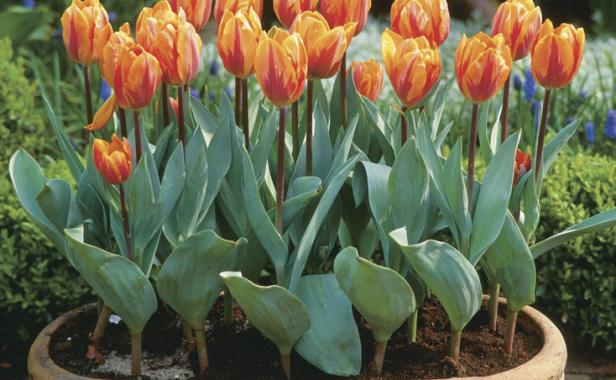
In December, my house had an early spring. While snow fell outside, the long bay window in the dining room bloomed with spring flowers: Grape hyacinths raised their blue spikes, daffodils assembled in white and yellow drifts, and tiny miniature irises with blue petals and yellow throats crowded together in 4-inch-diameter pots. When I came downstairs in the morning, I welcomed the smell of flowers and the sight of sunlit colors. They made the start of the gardening year seem just a little bit closer.
I owed my winter harvest of color and fragrance to forcing, an old trick that fools bulbs into blooming early. Forcing is easy to do. You will need potting mix, pots, bulbs, and a spot that will stay reliably cold but not freezing from late fall onward.
Learn more here.
Exploit the natural cycle
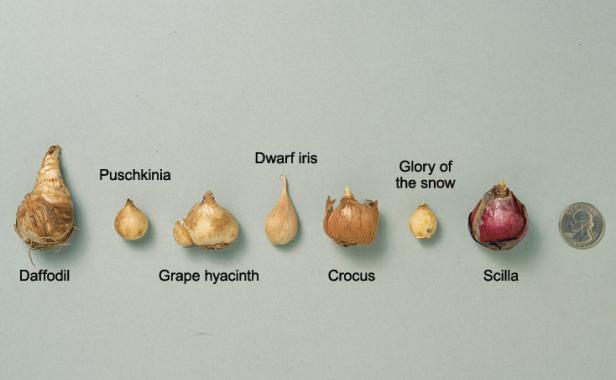
Photo/Illustration: Susan Kahn
The bulbs that are suited to forcing have a topsy-turvy cycle of growth in nature and in the garden. Most of them flower early in spring, while trees are still bare. Their leaves and roots persist just long enough—through mid- to late spring—for the bulbs to store a new supply of energy. Then the leaves and roots die and the bulbs go dormant for the summer and part of the fall.
In fall, when the soil cools, the bulbs awaken and send out new roots, the first step in their preparation for the next spring. The roots continue to grow until the soil cools to 40°F. In most of the United States, the bulbs produce a dense mat of roots before winter sets in. In cold climates, freezing temperatures halt the roots’ growth but won’t kill them; in warmer climates, the bulbs may continue to make roots throughout the winter.
When spring temperatures rise to between 40°F and 60°F, bulbs reawaken, send up leaves, and then make flowers. This growth is rapid, thanks to the full complement of roots. Before the bulbs go dormant again by fall, the leaves have plenty of time to replenish the energy of the bulbs.
Forcing exploits this cycle. In fall, you buy dormant bulbs, pot them, and keep them cold for several months to stimulate them to make roots. Once plants have roots, you bring the pots to a windowsill, where the warmth tricks the bulbs into thinking that spring has arrived. In short order, they flower, and you have an early spring.
Tips for forcing bulbs
Buy bulbs in fall, about six weeks before hard freezes are due. Look for bulbs that are firm, free of mold, and uniform in size.
Although almost any pot will do, pots with drainage holes and saucers are safest because they make it hard to drown roots. You can also use pots with no drainage holes, but you must water with a light hand.
Use ordinary potting mix. It provides air spaces and a considerable capacity to retain moisture. You can buy a ready-made mix, or you can make your own. My recipe is one part shredded peat moss and one part perlite. For top-heavy bulbs—like daffodils—add one-quarter part sand; the extra weight helps anchor the containers.
The right kind of cold
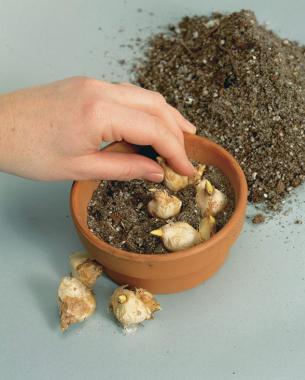
Photo/Illustration: Susan Kahn
Once you pot your bulbs, you have to keep them cold and moist for about three months so they can make roots. (Paperwhites are exceptions: They don’t require chilling and are ready to grow and flower as soon as you pot them and set them on a windowsill.)
The simplest way to chill bulbs is to store them in your refrigerator. The temperature on the shelves is about 40F, suitable for root growth. But refrigerators are as dry as deserts, so water the pots well, put them in plastic bags, and tie the tops of the bags to keep the mix moist. Check the pots once a month and water as needed. If you don’t want to use up your refrigerator space, bulbs can be carefully buried outdoors in dry straw or leaves, placed in a cold frame, or stored on cellar stairs.
To insulate your potted bulbs outdoors, gather a supply of dry leaves and heap them into a fluffy pile with plenty of air spaces. Choose a sheltered spot, safe from the northerly winds of winter: against your house, in the corner between your garage and compost pile, or next to a fence. Arrange your containers there in a tight circle. Cover your pots with a 1-foot-deep layer of dry leaves and spread the leaves at least 1 foot beyond the circle of containers. Lightly drape a tarp or a sheet of plastic over the pile of leaves to keep them dry, anchoring the edges with bricks, stones, or 2x4s. Insulated by the leaves, your containers will stay cold but not frozen. To check their progress, lift one edge of the covering, reach through the leaves, and pull out a container.
You can also chill your bulbs in a cold frame, but only if you’re sure the cold frame stays cold. On a sunny day in early winter, even if the outside temperature is well below freezing, a cold frame can heat up to 60°F or 70°F. Keep the temperature inside the cold frame low by opening the top in the morning; close it again in late afternoon to keep temperatures from dropping below freezing. And be sure to water the pots when they need it.
If your basement has outside stairs with a storm cover, you can also chill bulbs there. In late fall, I set 48 pots of bulbs—closed inside plastic garbage bags—on the landing at the foot of my basement stairs, a spot that’s about 4 feet underground, where the temperature ranges from near freezing to about 45°F—the ideal for growing roots and chilling bulbs.
Here come the flowers
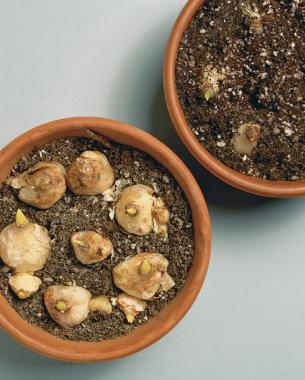
Photo/Illustration: Susan Kahn
When your bulbs have chilled for about three months, start to check for root growth. Don’t be misled into thinking they’re ready to take out of the cold by a shoot poking up through the potting mix. To be sure, lift each pot and look at the bottom. If you see plump, white roots poking through the drainage holes, the bulbs are ready to come out of the cold. The timing varies from bulb to bulb: Some need three months of chilling while others require five.
When your bulbs are ready, set them on a bright windowsill or place them in a sunroom. The bulbs need the light so that their leaves and flower stems will grow short and sturdy. In weak light, they will produce tall and lanky flower stems that are likely to flop over.
Water the pots with care. Before leaves appear, you may have to water only every second or third day. Once leaves appear, you may have to water every day. In both cases, wait until the surface of the potting mix is dry to the touch. If you want to keep the bulbs growing until spring so that you can plant them in the garden as perennials, give them a weak solution of fertilizer from time to time.
Forcing does seem to shorten the bloom time of most bulbs. Grape hyacinths, for example, remain fragrant and presentable for about a week indoors. Outdoors, they last two to three weeks. I think the difference has to do with temperature. Outdoors, in early spring, cool days and cold nights slow the onset of maturity. Indoor temperatures, however, stay close to 70F both day and night, hastening the flowers’ maturity and decline. To accommodate shortened bloom periods, force a lot of bulbs and bring only a few at a time to the windowsill. By staggering their bloom, you’ll have plenty of bulbs either in flower or awaiting their turn in the cold. Your spring can begin as early as December and last until the trees outside begin to leaf out.
Bulbs and times for forcing
Here are some bulbs that can be forced for winter bloom. To learn more about many of these bulbs, click on the images at the end of this story.
| Plant | Weeks of cold needed | Weeks to bloom |
| Crocus (Crocus spp. and cvs.) | 15 | 2–3 |
| Daffodils (Narcissus cvs.) | 15–17 | 2–3 |
| Fritillaries (Fritillaria meleagris and cvs.) | 15 | 3 |
| Glory of the snow (Chionodoxa luciliae and cvs.) | 15 | 2–3 |
| Grape hyacinths (Muscari spp. and cvs.) | 13–15 | 2–3 |
| Hyacinths (Hyacinthus orientalis cvs.) | 11–14 | 2–3 |
| Irises (Iris reticulata and cvs.) | 15 | 2–3 |
| Paperwhites (Narcissus papyraceus and cvs.) | none | 3–5 |
| Scillas (Scilla siberica and cvs.) | 15 | 2–3 |
| Snowdrops (Galanthus nivalis and cvs.) | 15 | 2 |
| Tulips (Tulipa cvs.) | 14–20 | 2–3 |
How to plant bulbs
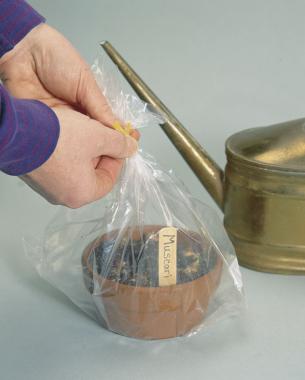
Photo/Illustration: Susan Kahn
To plant the bulbs, fill a pot three-quarters full with potting mix, set the bulbs close together on top of the mix, and then add more mix to cover them. Most bulbs for forcing are so small—under 34 inches in diameter—you can space them less than 1 inch apart. Close spacing looks good. A dozen grape hyacinths in a 6-inch-diameter pot make a strong show of color, and the crowding doesn’t bother them. The exceptions are daffodils and paperwhites; both need about 1 to 2 inches of space between bulbs.
I like to grow small bulbs, such as crocuses or grape hyacinths, in 4-inch-diameter pots. Then I can gather five or six pots at a time on a windowsill in any combination I please: all grape hyacinths to make a single sweep of color or a mix of bulbs for variety. You can get the same effect in larger pots by planting them full with one kind of bulb or by mixing several kinds together. It’s tricky to mix bulbs because they may flower at different times, but you might as well experiment—you’ll still have flowers, and you’ll learn what works.
Water the pot and enclose it within a plastic bag to keep the mix moist for a month or more. In the cold, the bulbs make roots, preparing themselves for spring and the return of warmth and light when they will make leaves and flowers.
When the bulbs’ roots poke out from a pot’s drainage holes, remove the plastic bag and move the pot to a windowsill. Warmth and light will soon cause pale green shoots to emerge.
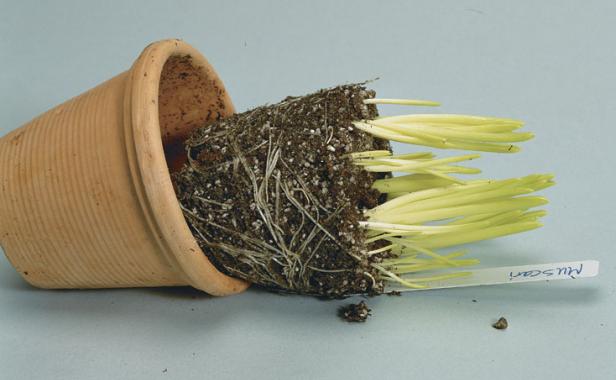
Photo/Illustration: Susan Kahn


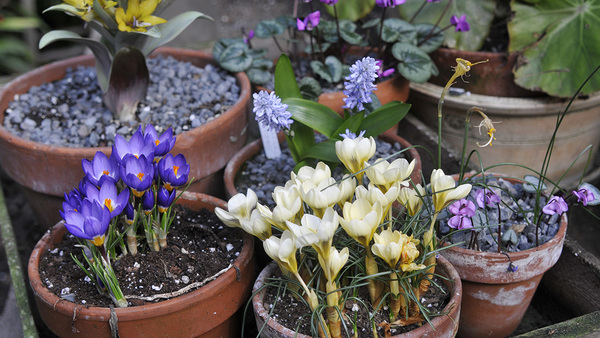
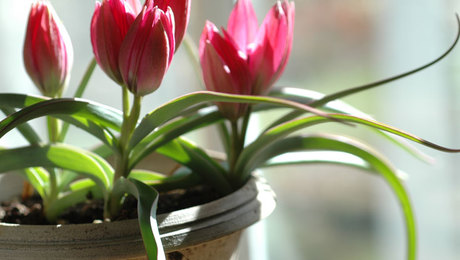













Comments
The quicken team can ensure that all your information are kept intact and for this reason you should use the backup and restore option judiciously. The quicken forum for help and support can sort any trouble you have with backup and restore or else you can simply try and get in touch with the quicken customer service helpline number which is available round the clock for any help you want.
https://www.quicken-phone-support.com/
Log in or create an account to post a comment.
Sign up Log in